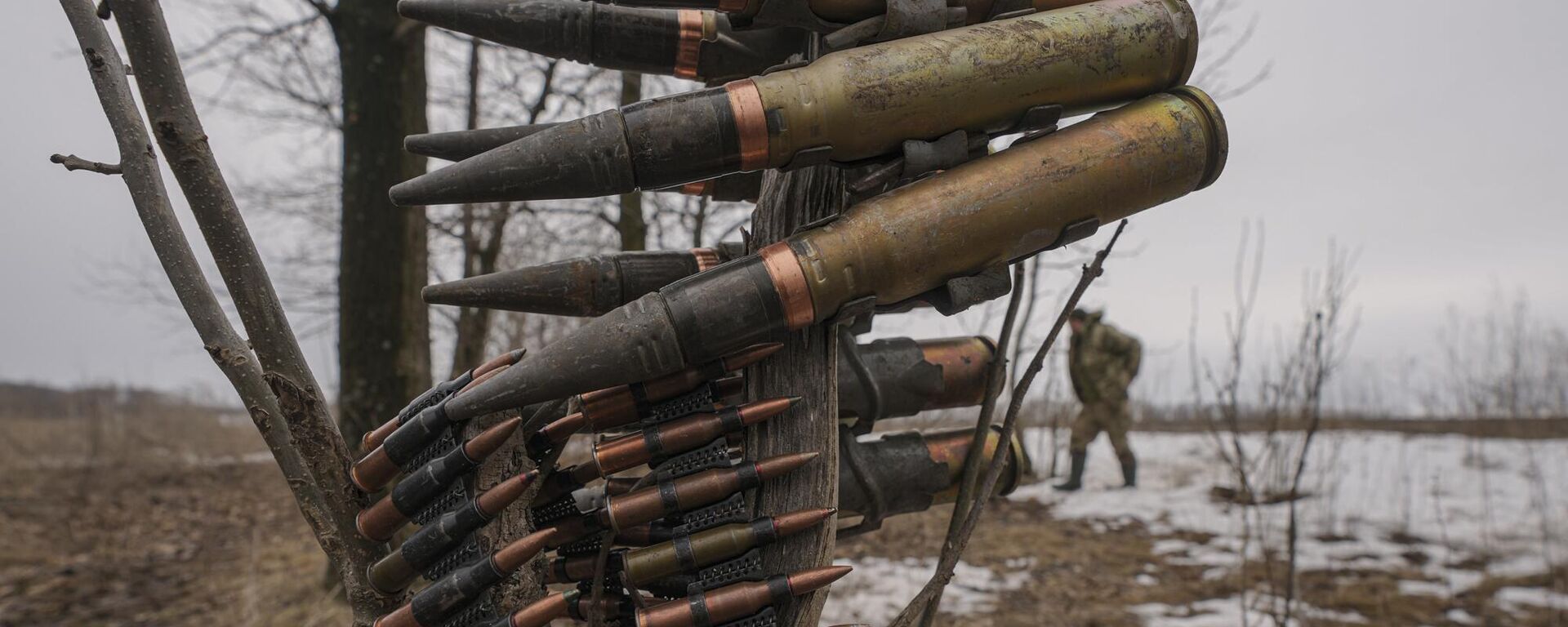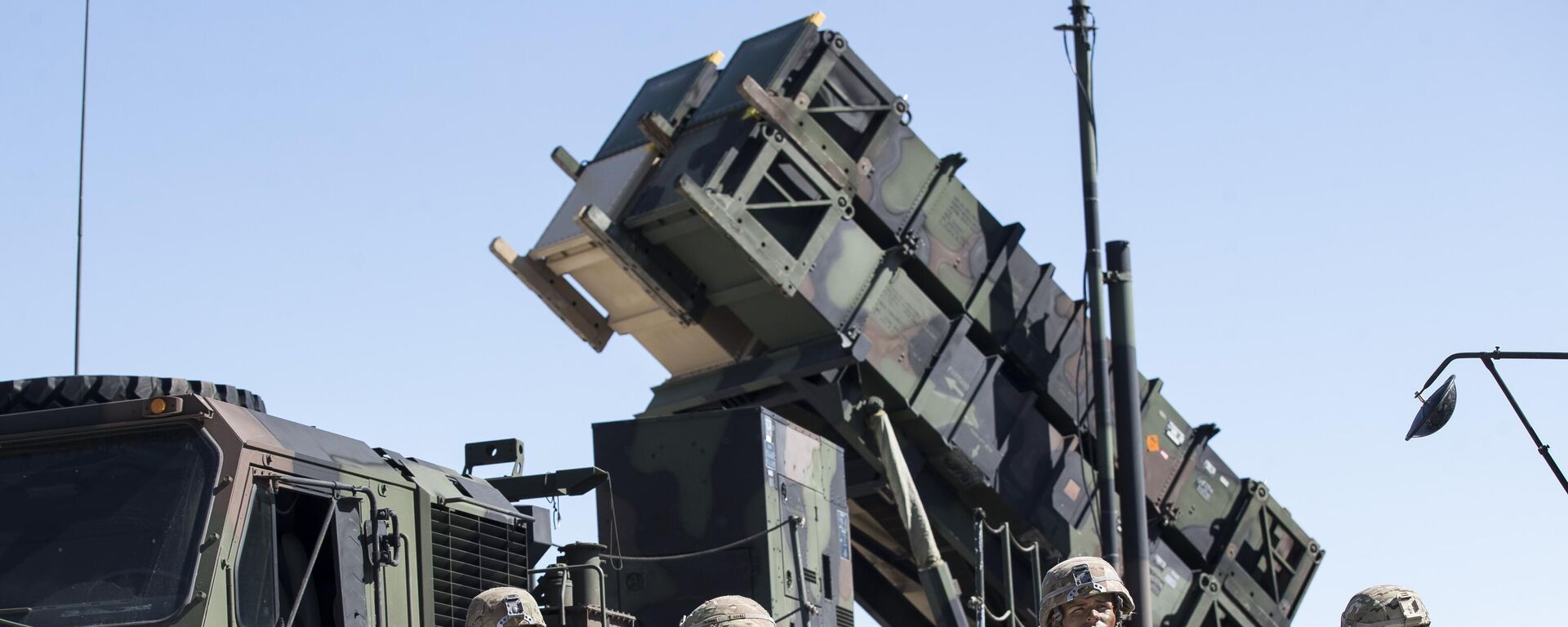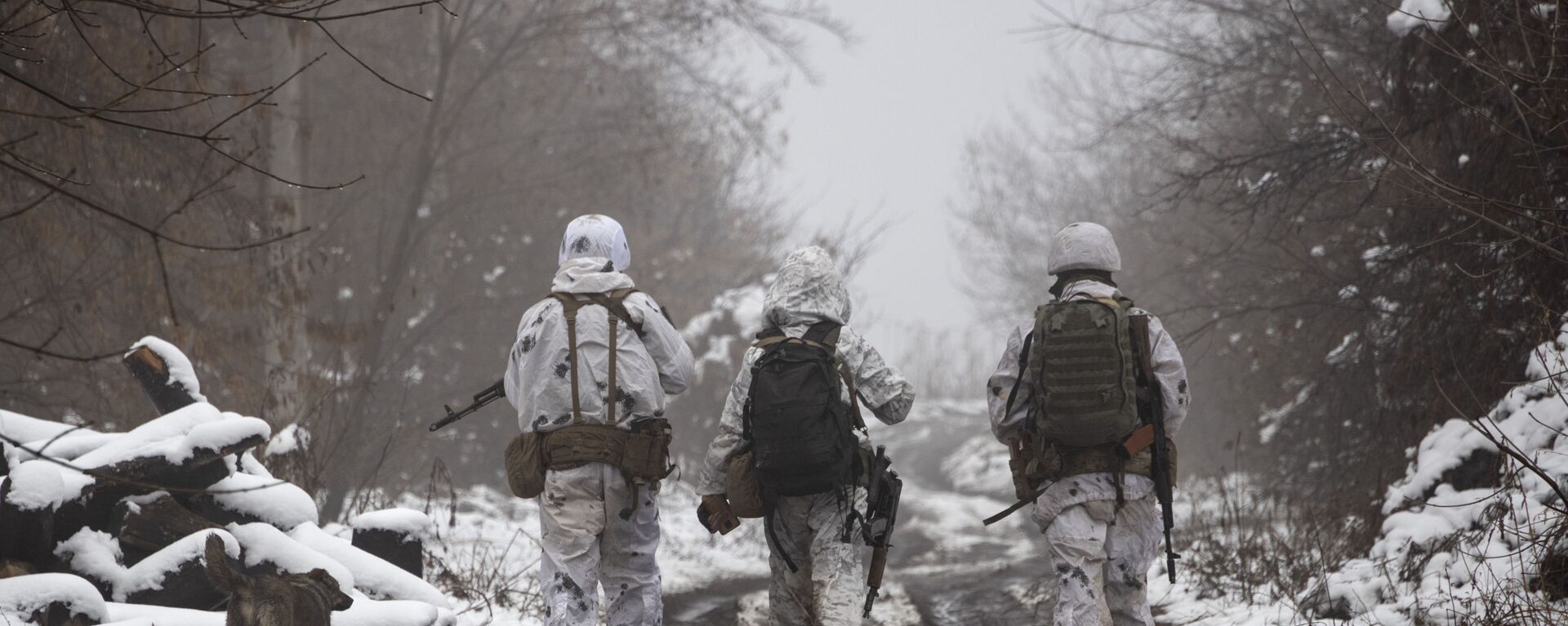https://sputnikglobe.com/20240311/fab-1500-the-russian-air-dropped-bomb-tilting-the-balance-against-ukraine-1117261769.html
FAB-1500: The Russian Air-Dropped Bomb ‘Tilting the Balance’ Against Ukraine
FAB-1500: The Russian Air-Dropped Bomb ‘Tilting the Balance’ Against Ukraine
Sputnik International
The past three months have seen a series of surprise breakthroughs by Russian forces against heavily reinforced Ukrainian positions in the Donbass, with troops cracking fortifications and entrenchments which Ukraine’s NATO-backed army spent a decade creating. Russia’s secret? A modernized take on a Soviet-made super-heavy aerial bomb.
2024-03-11T12:08+0000
2024-03-11T12:08+0000
2024-03-11T12:56+0000
military
ukraine
russia
donbass
cnn
tnt
bomb
aerial bomb
https://cdn1.img.sputnikglobe.com/img/07e8/03/0b/1117262004_0:24:800:474_1920x0_80_0_0_35d560116a905b7528f7a4d31981ff59.jpg
Western legacy media have discovered a "new" Russian super weapon that threatens to crack virtually any fortification.In a piece on Sunday, CNN warned that Russia has “begun using a powerful aerial bomb that has decimated Ukrainian defenses and tilted the balance on the front lines,” using “a basic Soviet-era weapon” converted “into a gliding bomb that can cause a crater fifteen meters wide.”The munition, which Ukrainian media had previously characterized as a “monster bomb” “more powerful than the Iskander” missile, is the FAB-1500 – a air-launched, 1,525 kg aerial bomb developed during the Cold War, and designed to blast through hard targets.The FAB-1500 was first introduced into service with the Soviet military in 1954, and comes packed with 675 kg of TNT – enough to level a fortification or bunker and leave a crater up to 20 meters deep, smash through up to three meters of reinforced concrete, and cause destruction across an area up to 500 meters.FAB-1500’s Secret: The UMPKWhile the FAB-1500 is powerful, its status as an unguided, free-fall munition limited its utility against near-peer or peer adversaries, particularly as anti-aircraft air defense became more sophisticated through the second half of the 20th century.Russia's military engineers were able to get around this weak spot using a UMPK – Russian acronym for "Unified Planning and Correction Module" – transforming free-falling FAB series bombs into laser and satellite-guided controlled munitions with an extended range. UMPK-equipped FABs feature foldout wing and rudder components and a computer targeting system improving the bombs' accuracy to within five meters of their target. The closest US analog is the JDAM-ER smart bomb kit.Equipped with the UMPK, FAB-1500s can reportedly be launched by their carriers distances up to 50 km from the target and up to 10 km up, and be carried both by strategic bombers, like the Tupolev Tu-95 and the Tupolev Tu-160, and by tactical strike jets like the Sukhoi Su-27 and Sukhoi Su-34.UMPK-equipped FABs began to be fielded last year, with an informed source confirming to Sputnik in September that the modules had made it possible to use Su-34s, which can carry up to eight tons' worth of weaponry on their 12 external hard points, to strike Ukrainian positions using the modernized FAB-250, FAB-500, and FAB-1500 bombs.Ukrainian and Western media began sounding the alarm about the FAB-1500’s use last fall, with Newsweek running a piece on the “Russian bunker-busting glide bomb [with a] 1,600ft blast radius” in late October.Ukrainian Air Force spokesman Yuriy Ignat warned as far back as the spring of 2023 that Ukraine must “urgently respond to” the “threat” posed by Russian FAB bombs, suggesting only sophisticated Western air defenses like the Patriot missile system could help force Russian jets to stay away from Ukraine’s airspace.Ignat warned CNN that the upgraded FAB-1500 is a potent threat in part because of its low price – “pennies in comparison with a missile.” Russia’s “goal” using the munitions, according to the Ukrainian Air Force spokesman, “is not only to hit our frontline positions, but [to fly] further behind our defenders to hit rear command posts, rear supplies, ammunition, and so on.”According to independent estimates by Russian military observers, while UMPC-equipped FAB bombs are inferior to missiles in terms of their range characteristics, their price is significantly lower, making them superior in both cost and firepower to major ballistic and cruise missiles, including those used by the Iskander missile system.FAB's Demoralizing RoleCommanders and soldiers in the field have confirmed to Western and Ukrainian media the extent to which FAB series bombs, including the FAB-1500, have served to demoralize Ukraine’s forces.A soldier from the 46th Separate Airmobile Brigade told CNN that the “damage done” by the FAB-1500 is “very serious,” and that “if you survive, you are guaranteed to have a contusion.”Ignat claimed “hundreds” of air bombs like the FAB-1500 were used during the battle for the strategic Donbass settlement of Avdeyevka in February, with “250 of them used in [the] Avdeyevka direction in 48 hours only” ahead of the Russian advance, according to the spokesman's information. The Russian Defense Ministry, it should be noted, has yet to confirm the FAB-1500's use in the Ukraine proxy war.
https://sputnikglobe.com/20230915/russias-su-34-jets-start-using-long-range-cruise-missiles-in-special-op-zone-in-ukraine-1113393697.html
https://sputnikglobe.com/20240310/ukraine-cant-easily-replace-patriot-air-defenses-destroyed-by-russia--report-1117241886.html
https://sputnikglobe.com/20240224/ukrainian-forces-out-of-ammo-weapons---ukraines-foreign-minister-kuleba-says-1116957578.html
https://sputnikglobe.com/20240311/russian-intel-aware-of-presence-in-ukraine-of-those-directly-related-to-nato-1117252339.html
ukraine
russia
donbass
Sputnik International
feedback@sputniknews.com
+74956456601
MIA „Rossiya Segodnya“
2024
News
en_EN
Sputnik International
feedback@sputniknews.com
+74956456601
MIA „Rossiya Segodnya“
Sputnik International
feedback@sputniknews.com
+74956456601
MIA „Rossiya Segodnya“
how has russia upgraded its fab series bombs, why are upgraded russian fab bombs so deadly, do russians have jdams
how has russia upgraded its fab series bombs, why are upgraded russian fab bombs so deadly, do russians have jdams
FAB-1500: The Russian Air-Dropped Bomb ‘Tilting the Balance’ Against Ukraine
12:08 GMT 11.03.2024 (Updated: 12:56 GMT 11.03.2024) The past three months have seen a series of surprise breakthroughs by Russian forces against heavily reinforced Ukrainian positions in Donbass, with troops cracking fortifications and entrenchments which Ukraine’s NATO-backed army spent a decade creating. Russia’s secret? A modernized take on a Soviet-made super-heavy aerial bomb.
Western legacy media have discovered a "new" Russian super weapon that threatens to crack virtually any fortification.
In a piece on Sunday, CNN
warned that Russia has “begun using a powerful aerial bomb that has decimated Ukrainian defenses and tilted the balance on the front lines,” using “a basic Soviet-era weapon” converted “into a gliding bomb that can cause a crater fifteen meters wide.”
The munition, which Ukrainian media had previously characterized as a
“monster bomb” “more powerful than the Iskander” missile, is the
FAB-1500 – a air-launched,
1,525 kg aerial bomb developed during the Cold War, and designed to blast through hard targets.
FAB – a Russian acronym for "High-Explosive Aviation Bomb" – makes up an entire lineup of Soviet and Russian-made general-purpose aviation bombs, from the 50 kg FAB-50 to the FAB-500, the FAB-2000, FAB-3000, FAB-5000, and the monstrous FAB-9000 (which features a conventional explosive charge of about 4,300 kg of TNT – about half the blast yield caused by the W54 – the world’s smallest tactical nuclear bomb.
The FAB-1500 was first introduced into service with the Soviet military in 1954, and comes packed with 675 kg of TNT – enough to level a fortification or bunker and leave a crater up to 20 meters deep, smash through up to three meters of reinforced concrete, and cause destruction across an area up to 500 meters.
FAB-1500’s Secret: The UMPK
While the FAB-1500 is powerful, its status as an unguided, free-fall munition limited its utility against near-peer or peer adversaries, particularly as anti-aircraft air defense became more sophisticated through the second half of the 20th century.
Russia's military engineers were able to get around this weak spot using a
UMPK – Russian acronym for
"Unified Planning and Correction Module" – transforming free-falling FAB series bombs into laser and satellite-guided controlled munitions with an extended range. UMPK-equipped FABs feature
foldout wing and rudder components and a computer targeting system improving the bombs' accuracy to within five meters of their target. The closest US analog is the
JDAM-ER smart bomb kit.
Equipped with the UMPK, FAB-1500s can reportedly be launched by their carriers distances up to 50 km from the target and up to 10 km up, and be carried both by strategic bombers, like the Tupolev Tu-95 and the Tupolev Tu-160, and by tactical strike jets like the Sukhoi Su-27 and Sukhoi Su-34.
UMPK-equipped FABs began to be fielded last year, with an informed source
confirming to Sputnik in September that the modules had made it possible to use Su-34s, which can carry up to eight tons' worth of weaponry on their 12 external hard points, to strike Ukrainian positions using the modernized FAB-250, FAB-500, and FAB-1500 bombs.

15 September 2023, 15:17 GMT
Ukrainian and Western media began
sounding the alarm about the FAB-1500’s use last fall, with Newsweek running a piece on the “Russian bunker-busting glide bomb [with a] 1,600ft blast radius” in late October.
Ukrainian Air Force spokesman Yuriy Ignat warned as far back as the spring of 2023 that Ukraine must “urgently respond to” the “threat” posed by Russian FAB bombs, suggesting only sophisticated Western air defenses like the Patriot missile system could help force Russian jets to stay away from Ukraine’s airspace.
Ignat warned CNN that the upgraded FAB-1500 is a potent threat in part because of its low price – “pennies in comparison with a missile.” Russia’s “goal” using the munitions, according to the Ukrainian Air Force spokesman, “is not only to hit our frontline positions, but [to fly] further behind our defenders to hit rear command posts, rear supplies, ammunition, and so on.”
According to
independent estimates by Russian military observers, while UMPC-equipped FAB bombs are inferior to missiles in terms of their range characteristics, their price is significantly lower, making them superior in both cost and firepower to major ballistic and cruise missiles, including those used by the Iskander missile system.
The Russian media has estimated that the FAB-1500's lower-tier cousin, the FAB-500, has an approximate price tag of as little as 300,000 rubles (US $3,200) apiece, with the addition of the UMPC adding 30 to 50 percent to the cost – a steal compared to Kalibr and Iskander missiles, which can go for the equivalent of $500,000 to $4.3 million each, according to publicly available guesstimates.

24 February 2024, 21:03 GMT
Commanders and soldiers in the field have confirmed to Western and Ukrainian media the extent to which FAB series bombs, including the FAB-1500, have served to demoralize Ukraine’s forces.
A soldier from the 46th Separate Airmobile Brigade told CNN that the “damage done” by the FAB-1500 is “very serious,” and that “if you survive, you are guaranteed to have a contusion.”
Ignat claimed “hundreds” of air bombs like the FAB-1500 were used during the battle for the strategic Donbass settlement of Avdeyevka in February, with “250 of them used in [the] Avdeyevka direction in 48 hours only” ahead of the Russian advance, according to the spokesman's information. The Russian Defense Ministry, it should be noted, has yet to confirm the FAB-1500's use in the Ukraine proxy war.
Previously, Ukrainian commander Sergey Krivonos warned that the upgraded Russian FAB capabilities are a threat whose gravity could not be overstated. “If four or five bombs weighing 500 kg to 1.5 tons land on a platoon or battalion stronghold, believe me, nothing will be left there,” the general said.






